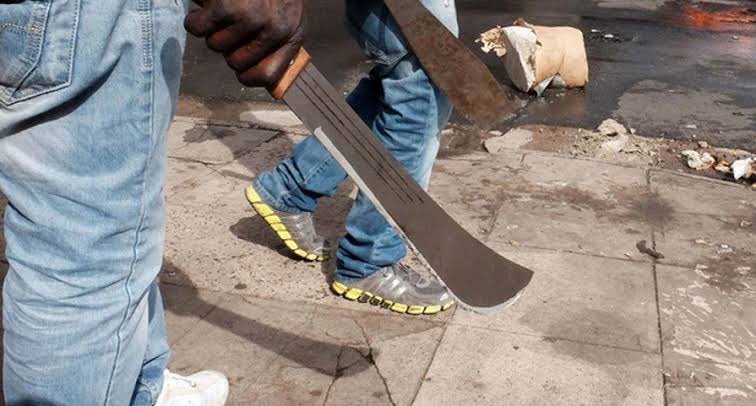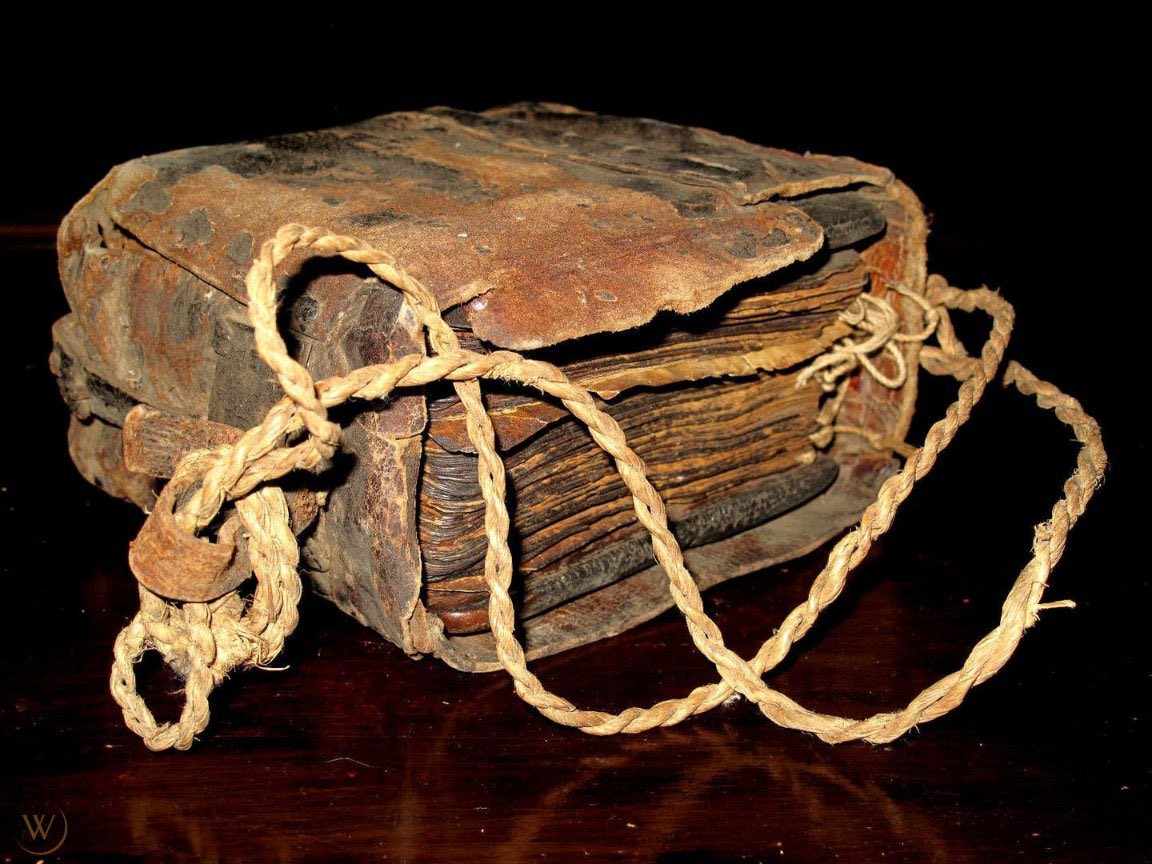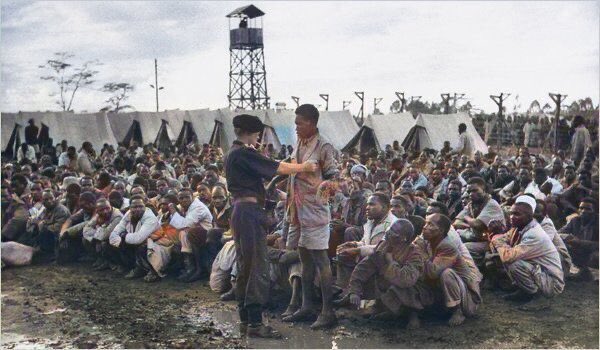Obafemi Awolowo University July 10, 1999 massacre by the Black Axe confraternity. An unforgettable event that made cultism a forbidden act on the campus till date.
A THREAD
A THREAD

The Obafemi Awolowo University massacre was a mass murder of students of Obafemi Awolowo University in Ile-Ife, Osun State, Nigeria on 10 July 1999. Five students of OAU were killed and eleven injured. 

It was perpetrated by an organized death squad of 40 members of the Black Axe Confraternity branch at the university. They invaded the Awolowo Hall of the university at around 4:30 A.M., clad in black trousers and black T-shirts, 

their faces hidden by masks; they carried and used shotguns and hatchets against students. On the night of 9 July 1999, student groups held a party at Obafemi Awolowo University.
The 'Mirror Online' reports: "members of Kegites Club on the campus, Man O’ war members, and various other student leaders both former and incumbent, gathered at the open ground between Angola and Mozambique Halls."
Later in the night many of the party-goers began occupying the cafeteria of Awolowo Hall whilst others returned to their halls of residence to sleep. 

At between 3:00 and 3:30 am (now 10 July 1999) a large number of cultists (reported to be between 22 and 40) of the Black Axe confraternity arrived to carry out a pre-planned assault on the university with the intention of carrying out the murders of several prominent members
Please follow my page @nutayobami If you enjoy the thread and want more Crime, African history, and facts thread.
Please don’t ignore, help get this page to 70k. I’ll follow back as much as possible.🥺🙏
Please don’t ignore, help get this page to 70k. I’ll follow back as much as possible.🥺🙏

of the student union. Allegations that these assassinations were sponsored by the university's vice chancellor, Wale Omole, remain to this day but it is unclear if this is the case. It is said "one of the cultists, 



Kazeem Bello, aka Kato, confessed that Wale Omole had a hand in their July 10 dastardly operation. Upon arriving at the university the Black Axe cultists "drove through the main gate and proceeded to the car park next to the tennis courts in the sports center.
They disembarked there and went on foot along a bush path to Awolowo Hall, where they violently interrupted the gyration, firing guns and also wielding axes and cutlasses. Although the order of the events that followed vary from account to account (in terms of 

who was killed in what order) it is clear that following the assault 4 people were left dead, another died from gunshot wounds later, one more survived from a gunshot wound and "Twenty-five others received minor injuries, which were sustained during the stampede out
of the Awolowo Hall cafeteria and later on during the attack. The victims, which included the then Students’ Union Secretary General, George Yemi Iwilade, (fondly called Afrika); 400 level medical student, Eviano Ekelemu; a graduating student, Yemi Ajiteru; 

100-Level Philosophy student, Babatunde Oke, and Ekpede Godfrey were gunned down by the “marauding beasts” in Blocks 5 and 8, Awolowo Hall. Tunde Oke was still alive but died on the operating table. Four others, George Iwilade, Yemi Ajiteru, Efe Ekede and Eviano Ekelemu, were
brought in dead. Eviano Ekelemu bled to death from gunshot wounds to the groin and thigh. The other three died from gunshot wounds to the head. During the attack several accounts state the Black Axe members were heard to be "shouting, “Legacy, come out!”" referring to the
suspended Students’ Union President, Lanre Adeleke. Additional targets of the attacks are described also. Prof. Roger Makanjuola's account states the same and he also writes: "During the course of the incident, the attackers also shouted the names of “Afrika”, George Iwilade, 



and “Dexter”, the Chief of the Kegites, demanding that they come out." Of the targets of the massacre Lanre Adeleke (Legacy) managed to escape by jumping from a balcony after hearing the gunfire. “Dexter”, the Chief of the Kegites, also escaped unharmed. George Iwilade (Afrika),
the Secretary-General of the Students’ Union and a Law student was not so lucky. Upon entering his room the Black Axe "shot him immediately in the head. Then they smashed his head with their axe to make sure he was dead".
It is reported George Iwilade (Afrika)
It is reported George Iwilade (Afrika)
was the only successfully assassinated victim. "Afrika, who was said to have carried out the arrest (relating to the incident on Saturday, 7 March 1999), was mercilessly butchered while the other four were just unfortunate victims. Prof. Roger Makanjuola 



gives the order of events as being: "They first entered Room 184, where they shot and killed Efe Ekede, a Part II Psychology student. In Room 230, they shot Charles Ita, a Part II Law student. A group of the attackers then shot Yemi Ajiteru, a Part II Religious
Studies student, through the head in the corridor outside the Kegites’ headquarters. In Room 273, they found George Iwilade (Afrika), the Secretary-General of the Students’ Union and a Law student, and shot him through the head, along with another occupant, Tunde Oke, a Part 1
student of Philosophy, who was shot in the abdomen. When the attackers got to Room 271, the room allocated to the suspended Students’ Union President, Lanre Adeleke (Legacy), they found that he had escaped. Legacy was in his room when he heard the first gun shots.....
The band of thugs proceeded to Fajuyi Hall on foot, where they shot and killed one more student. That individual, Eviano Ekelemo, a medical student, was certainly not a student activist, but they shot him anyway.". However, the order in which the victims were killed
varies in various testimonies by a number of witnesses. Prof. Roger Makanjuola's account of the Black Axe cultist's escape is: "The murderers left Fajuyi Hall on foot and went through the bush path behind the Hall back to their vehicles.
They drove to the Students’ Union building, which they ransacked. They returned to their vehicles and drove out of the university through the main gate. The security staff, having heard gunfire, fled for their lives. Thus the exit of the marauding thugs was unchallenged.
An account of what led to the massacre is given by Prof. Roger Makanjuola's book Water Must Flow Uphill (Adventures in University Administration). Makanjuola, following the massacre, became vice chancellor of the university and took an active role in both investigating and
punishing those from the university involved in the murders. On Saturday, 7 March 1999, a group of Black Axe members held a meeting in Ife town. After the meeting, they drove back to the campus. On the main road, Road 1, leading into the campus, they were overtaken by
some students in another car. For whatever reason, they were enraged and gave chase to the students. The students, seeing them in pursuit, raced hastily to the car park outside Angola Hall and ran into the adjacent Awolowo Hall for safety. The Students’ Union, which had also
received information that secret cult members were gathering in a house in the senior staff quarters, mobilised in response to the incident. Led by George Iwilade, the Secretary-General, a group of them drove to the house, officially occupied by Mr. F.M. Mekoma, and
forced their way into the boys’ quarters. They found nine individuals inside, eight of them students of the university, with a submachine gun, a locally manufactured gun, an axe, a bayonet and the black clothing and regalia of the Black Axe cult. The university authorities were
informed, and the members of the secret cult were handed over to the police. They were held in police custody and taken to the Chief Magistrate's Court where two weeks later they were granted bail.
Makanjuola documents and raises concerns over the way the matter was handled by both the police and court system who broke from protocol, common sense and destroyed evidence and how this led to the failure to be able to prosecute the Black Axe members involved in the incident.
Prof. Roger Makanjuola writes: "The case was heard on 31 March, and to the utmost amazement of everyone, the Chief Magistrate discharged and acquitted the arrested individuals. The students who had apprehended the cult members were not called as witnesses.
The investigating police officer, Corporal Femi Adewoye, claimed that the witnesses could not be located and actually stated in Court, “I tried to contact the complainants in this case, all to no avail. To date, there is no complainant in the case.
Since all the accused persons denied the allegations against them
and there is no complainant, there is no way the allegations can be proved.” This was the submission of the prosecuting police officer! Usually, in such cases, witness’ summons were served through the University
and there is no complainant, there is no way the allegations can be proved.” This was the submission of the prosecuting police officer! Usually, in such cases, witness’ summons were served through the University
Administration but this did not happen. The trial was concluded in two court appearances in eight days. The Chief Magistrate also ordered that the submachine gun be sent to the police armourer and the other exhibits be destroyed, thus eliminating all the evidence,
and making it impossible to re-open the case. The Judicial Enquiry recommended that the Magistrate be reported to the Judicial Commission for appropriate disciplinary action. Nothing came of this, as nothing came of all the other recommendations of that Panel.
Prof. Roger Makanjuola recalls following the failed prosecution the Black Axe cultists returned to the university to study. Much to the dismay and concern of fellow students. Under pressure from students the university's authorities moved to suspend the cultists involved
by issuing a 'release' but failing to send the specific students official letters informing them of their suspension. Makanjuola says: "Shortly afterwards, the University was closed as a result of a student crisis. When it re-opened three months later,
the cult members returned to the campus and were seen attending lectures. The students raised an alarm once more. In response to this, the University issued a release on 2 July re-affirming the suspensions of the cult members.
The letters of suspension were dated 8 July and it is doubtful whether those affected actually received them before the tragic events two days later. They were mostly from upper and middle-class families, and therefore did not really have problems with
anti-poor policies of the government and university management, for instance how to pay the contentious charges being imposed on students. Today, there are students from poor background joining cults. They largely do so because campus cultism provides
a veritable platform to raise money through extortion and other criminal activities. Another factor is said to be the university's administration at the time of the massacre. Vice Chancellor Wale Omole said to have taken no action,
aside from perhaps protecting, known campus cultists. Peluola Adewale states "his (Vice Chancellor Wale Omole) administration created an enabling atmosphere for the attack. For the eight years he spent in office, Omole did not show any seriousness in fight against campus cultism,
rather it was commonplace for cultists apprehended by students to get their way back to the university unscratched. While student activists were expelled for leading students in various demands, it was on record that no cultist was punished by the Omole-led management.
• • •
Missing some Tweet in this thread? You can try to
force a refresh

 Read on Twitter
Read on Twitter



















